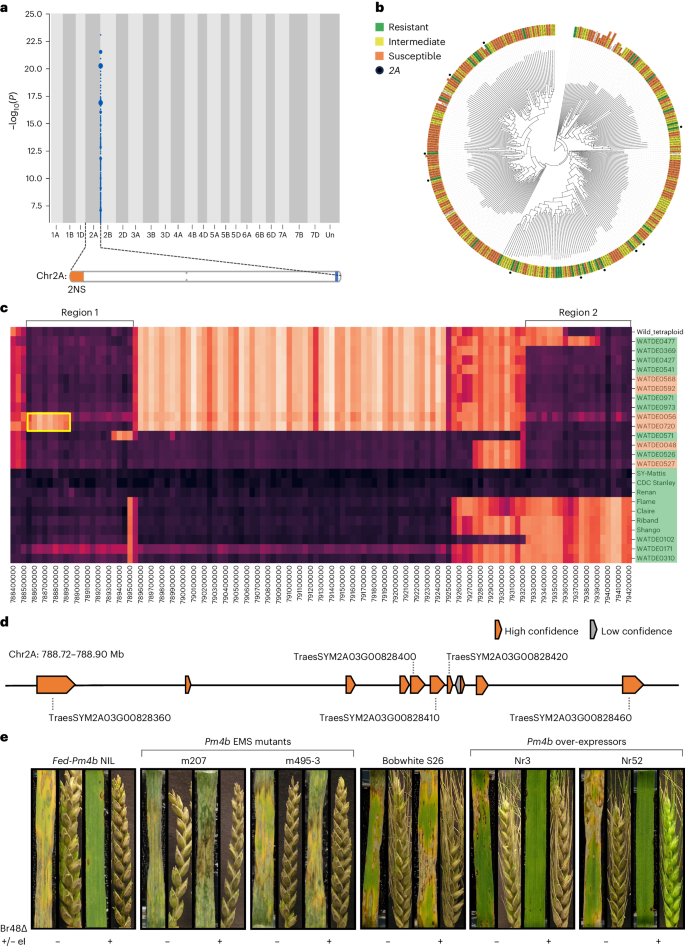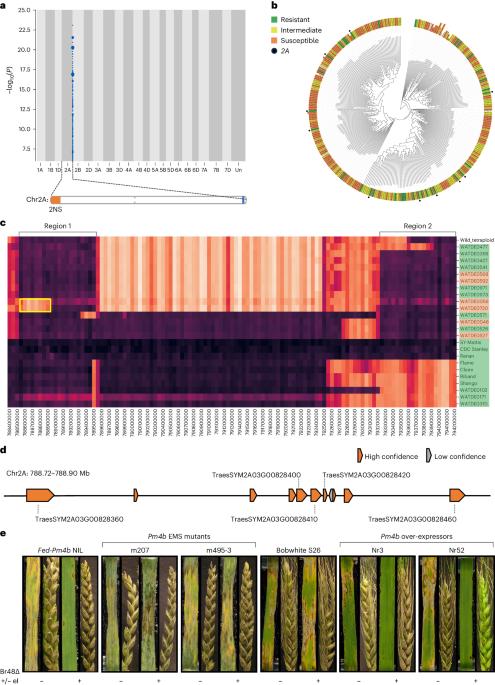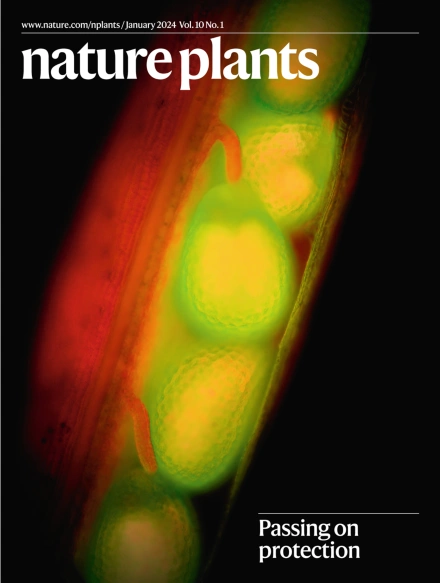小麦白粉病抗性基因 Pm4 也能赋予小麦瘟疫抗性
IF 15.8
1区 生物学
Q1 PLANT SCIENCES
引用次数: 0
摘要
小麦瘟病由真菌 Magnaporthe oryzae 引起,自 1985 年在巴西出现以来威胁着全球谷物生产,最近又蔓延到孟加拉国和赞比亚。在这里,我们证明了小麦感染分离株中常见的 AVR-Rmg8 效应子能被 Pm4 基因识别,Pm4 基因曾被证明能赋予小麦白粉病病原菌 Blumeria graminis f. sp. tritici 特定品系的抗性。我们发现,Pm4 等位基因在识别不同的 AVR-Rmg8 等位基因方面存在差异,有些等位基因只在幼苗叶片上赋予抗性,而不在穗上赋予抗性,因此选择那些在两种组织中都起作用的等位基因非常重要。这项研究发现了一个识别孟加拉国和赞比亚小麦稻瘟病分离物中重要毒力因子的基因,为这些地区培育具有持久抗性的小麦栽培品种迈出了重要的第一步。本文章由计算机程序翻译,如有差异,请以英文原文为准。


The wheat powdery mildew resistance gene Pm4 also confers resistance to wheat blast
Wheat blast, caused by the fungus Magnaporthe oryzae, threatens global cereal production since its emergence in Brazil in 1985 and recently spread to Bangladesh and Zambia. Here we demonstrate that the AVR-Rmg8 effector, common in wheat-infecting isolates, is recognized by the gene Pm4, previously shown to confer resistance to specific races of Blumeria graminis f. sp. tritici, the cause of powdery mildew of wheat. We show that Pm4 alleles differ in their recognition of different AVR-Rmg8 alleles, and some confer resistance only in seedling leaves but not spikes, making it important to select for those alleles that function in both tissues. This study has identified a gene recognizing an important virulence factor present in wheat blast isolates in Bangladesh and Zambia and represents an important first step towards developing durably resistant wheat cultivars for these regions. The wheat powdery mildew resistance gene Pm4 also confers resistance to wheat blast carrying the effector AVR-Rmg8. The authors propose the Pm4f allele as the most effective allele to deploy in Bangladesh and Zambia.
求助全文
通过发布文献求助,成功后即可免费获取论文全文。
去求助
来源期刊

Nature Plants
PLANT SCIENCES-
CiteScore
25.30
自引率
2.20%
发文量
196
期刊介绍:
Nature Plants is an online-only, monthly journal publishing the best research on plants — from their evolution, development, metabolism and environmental interactions to their societal significance.
 求助内容:
求助内容: 应助结果提醒方式:
应助结果提醒方式:


